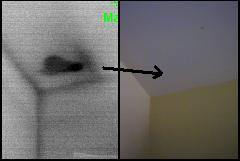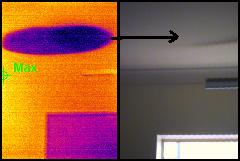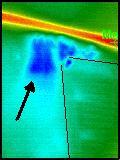An infrared house inspection is a quick way to identify hidden issues that most home building inspectors won’t see.
Here’s what you don’t want to happen to you when buying a house in NZ…
This was a very ugly situation for a home buyer that I recently did a ‘post’ purchase moisture inspection for in St Heliers, Auckland. Here’s what happened:
The home was over 400sqm is a nice area, and was been sold at auction. The home buyers loved the place because it looked great, and better still only 2 people turned up to the auction. The buyers theory was that they didn’t need to get a building or moisture inspection prior to buying the house because if they got it cheap enough at auction, they would have spare cash leftover to fix any problems. Well…

Firstly, some vendors will sell their home at auction because they know perfectly well it wouldn’t pass an infrared or building inspection. Secondly, no matter what, the deal in unconditional when the hammer goes down, so all it takes is one emotional bidder to rush in and buy without proper due diligence, and the ‘hassles & problems’ with the house are instantly transferred on to the buyer at auction… and that’s exactly what happened in this situation. Read on:
The buyer called to get the infrared inspection after they purchased the home to identify any issues, and to enable them to start remedial work asap. Interesting! Sure enough the home had several signs of moisture ingress, leaking deck, visual evidence of major leaks, untreated timber… and to top it off, the building inspector went onto the roof and found roof tiles that had slid down in the gutter leaving big open holes on the roof! Also, high moisture readings were detected in the timber framing by conducting an invasive test. The list of issues found with this place didn’t seem to end, but to the human eye the place looked just fine.
So now what for the buyer?
They only have two options. 1) Walk away and forfeit the deposit, or 2) Take the issues on and potentially uncover a huge can of worms. (Leaky homes aren’t cheap to fix!)
No matter how good a place looks, do not take the risk. There have been several occasions where the vendors have simply ‘bogged up’ and painted over problems… but the moisture in the timber still remains.
It’s the “It won’t happen to me” line of thinking that could catch you out when buying a home in NZ.













